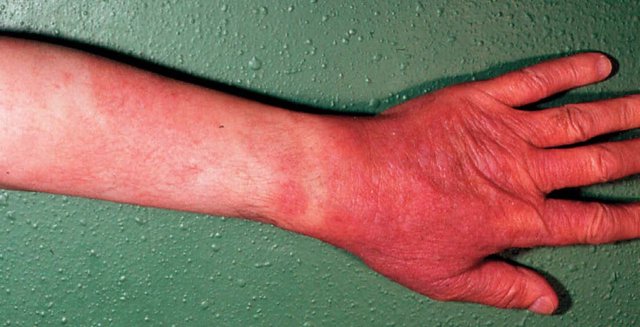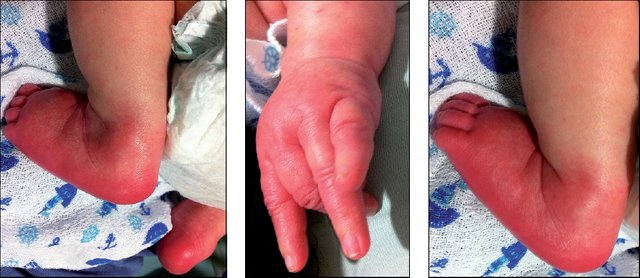Glove and Sock Syndrome, a rare disease
The syndrome of gloves and socks, is one of the pathologies that very little are common or that is rarely seen, this exanthema in glove and sock or papulopurpuric syndrome in glove and sock, is a viriasis that usually affects young adults with predominance female and in which its typical lesional topography and clinical evolution stand out. It is characterized by the appearance of erythema and pruritic edema in the hands and feet to progress to an erythematopurpuuric rash that can later affect other areas: flexures and even the face.

This syndrome is characterized by exanthematic lesions that evolve over time develop a purpuric character its main initial manifestation is in the hands and feet, which gives the name to the syndrome, although it can later be extended to other regions such as cheeks, elbows, knees, genital area, thighs and armpits. The cutaneous picture may be accompanied by variable mucous manifestations, such as vesiculopustules on soft and hard palate, petechiae and painful exulcerations on the lips. Systemic symptoms do not vary from other viral conditions with asthenia, anorexia, arthralgias, lymphadenopathy and fever of up to 40 °, in turn paresthesias is manifested, which makes the individual feel a tingling sensation which makes it difficult to maintain stability.

Most of the cases are seen in young adults. In children parvovirus B19 usually manifests through the infectious megaloeritema or fifth disease, which was described at the end of the 19th century as an acute, afebrile and self-limiting rash. The rash begins on the face, with an intense red color and confluent on the cheeks, giving a slapped face appearance. Later it also appears in thorax and extremities. The exanthema becomes clearer in its central part acquiring a geographical aspect. There is no peeling. This rash lasts an average of 7 days. 0We should not forget that parvovirus B19 is responsible for aplastic crises in patients with hereditary spherocytosis (Minkowski-Chauffard disease) and other hemolytic anemias, constituting what is called Gasser syndrome. In it, giant erythroblasts with diminished reticulocytes are characteristic. It is usually resolved in 2 weeks with purely symptomatic treatment.
To complete the rash, it is resolved in 2 weeks with symptomatic treatment based on painkillers-anti-inflammatory analgesics. Given how prolonged their evolution may be, it is not uncommon for the patient to be uneasy. Therefore the PPGSS should always be in the mind of the dermatologist when we are in the clinic in front of a rash of possible viral etiology, being the clinical history fundamental to think about the possible differential diagnoses.
Congratulations @vazquezmolina! You received a personal award!
You can view your badges on your Steem Board and compare to others on the Steem Ranking
Vote for @Steemitboard as a witness to get one more award and increased upvotes!